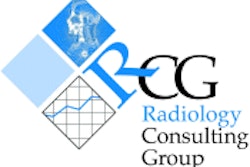American Hospital Publishing, Chicago, IL, 1995, $90
The Architecture of Imaging is written for radiologists, administrators, architects, and others involved in the development and operation of imaging facilities.
One of the greatest concerns of an imaging group is that the facility, and its infrastructure, will become outdated almost as soon as it is built. The Architecture of Imaging takes this into consideration, espousing the philosophy that maximum flexibility must be maintained while planning the most modern and efficient structure possible. The author pays special attention to the issue of costs and keeping them in check.
The book has six sections:
Part 1: The evolution of imaging and the impact on facility design
Part 2: The development of an imaging facility, project organization, project
management, and equipment outlay
Part 3: The management of various imaging modalities within a facility
Part 4: The design details of an imaging facility, including concepts, configuration, and work flow
Part 5: Trends in imaging and in healthcare
Part 6: Appendices with information on commercial building materials and case studies of existing facilities
This title is much different than your average diagnostic radiology textbook. The figures aren’t radiologic images, but rather draft plans and blueprints. The plainly written text is effective and flows well. Rostenberg devotes equal time to such big-picture issues as building design, as he does to details on lighting and décor.
For example, the chapter on room design discusses how a high volume of outpatient and invasive procedures can affect a facility’s design, particularly as local building codes vary widely. A facility that primarily performs outpatient imaging will have to consider a variety of elements, such as vertical clearance inside a non-hospital building and floor-loading capacities, Rostenberg points out.
Other sections in the same chapter touch on the waiting area and dressing area set-ups, both of which play a key part in the patient’s overall imaging experience.
This book may be the only one that allows such disparate groups as radiologists, architects, business managers, and venture capitalists to get together to understand how their particular area of expertise will be integrated into the creation of an imaging facility.
As the influence of technology in medicine continues to grow, the reliance on diagnostic imaging information increases, and communications-based information management will fundamentally alter the way radiology is practiced. The Architecture of Imaging is an important resource for anyone interested in the business of imaging.
By Dr. Douglas P. BeallAuntMinnie.com contributing writer
January 31, 2002
Dr. Beall is a staff radiologist in the musculoskeletal division, department of radiology at Wilford Hall Medical Center, Lackland Air Force Base, TX. He also is an assistant professor of radiology, department of radiology and nuclear medicine, Uniformed Services Health University in Bethesda, MD.
To purchase The Architecture of Imaging, contact Bill Rostenberg, vice president, SmithGroup, 225 Bush Street, 11th floor, San Francisco, CA 94104, 415-365-3463.
To read an architect’s perspective on this title, click here.
If you are interested in reviewing a book, let us know at [email protected].
The opinions expressed in this review are those of the author, and do not necessarily reflect the views of AuntMinnie.com.
Copyright © 2002 AuntMinnie.com



















